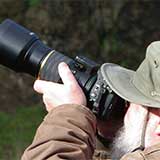Tillamook Coast Life Blog
Late-summer Tidal Marsh Wildflowers on the Tillamook Coast
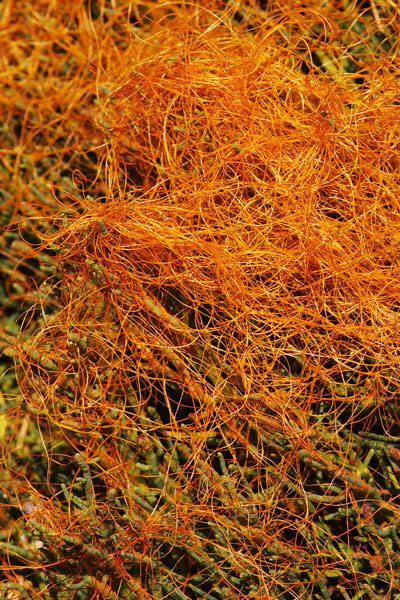
The tidal marshes on the peripheries of our estuaries are critically important habitat for juvenile fish and shellfish, including many commercially important species. They are also home to a variety of specially adapted wildflowers, including several that bloom in mid-late summer, after the peaks of many terrestrial wildflower assemblages.
Where are salt marshes in Tillamook County?
The most extensive saltmarsh stands are in Nehalem Bay on the spit across from Wheeler, and probably best reached by kayak or small boat. (In Tillamook Bay, in the Southern Flow-way project area, the salt marsh is reached by turning off Hwy 101 about a mile south of the Tillamook Cheese Factory onto Goodspeed Rd. and going west to the end of the road.) This is an extensive restoration project site, and the marsh characteristics will improve over time.
Currently, the best saltmarsh areas are out on the western fringes, a good hike from the end of the road. A smaller area of marsh is accessible from the end of the trail system in Kilchis Point Reserve in Bay City. In Netarts Bay, the eastern fringe of the spit has some of the best and most pristine saltmarshes in the county. This can be accessed by hiking north from Cape Lookout State Park (day use fee) or by kayak or boat from the marina near the mouth of the bay.
Sand Lake also has extensive saltmarshes. The section accessible by walking north from the west end of the Whalen Island bridge can have nice blooms. In Nestucca Bay, the best-developed marshes are on the back side of the sand spit, accessible by hiking east through the dunes from the Bob Straub State Park parking lot, and walking south along the bayshore.
The Salmon River Estuary, at the very southern edge of the county, has very extensive saltmarshes. A small area can be reached by walking from Knights Park at the west end of Three Rocks Road; but the rest of the area is best accessed from the water. In addition, small patches of salt marsh are scattered along the shores of the lower reaches of all the estuaries, and are worth checking out.
Saltmarsh environments make for wise plants
Saltmarsh and some other coastal plants show some special adaptations to help them survive in salty environments. Although this environment has abundant water, the salt content can lead to severe stress and even desiccation. If you have ever cooked eggplant you might remember that many recipes call for sprinkling the cut flesh with salt “to draw out the excess moisture.” The same thing can happen in estuaries. To prevent desiccation, many saltmarsh plants are succulent, with thickened juicy leaves and stems, and with a thickened cuticle. These allow them to store water with lower salt content in their tissues, and the cuticles reduce osmotic exchange that would otherwise draw out the water or flood them with salt. On the other hand, the salty environment discourages many insects and slugs, and some mammals that might feed on their upland relatives, so they do not need as elaborate defenses. Within the salt marshes, elevational zoning is apparent on a very compressed scale. Species may replace each other over vertical distances of less than a foot, for differences of just inches in elevation result in substantial differences in length of tidal inundation, and the different species vary greatly in tolerance to submersion.
Here are several saltmarsh plants today that provide nice floral displays in Tillamook estuaries into September.
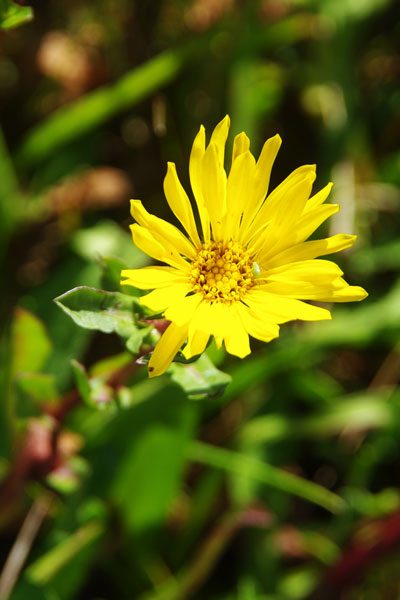
Oregon Gumweed, Grindelia stricta, is a member of the sunflower family. Intensely yellow blooms like small sunflowers accent the higher spots in the tidal marshes. The flowers average about 2 inches in diameter, and attract a variety of native bees and butterflies. They are borne on clustered dark red stems, usually 6-20 inches tall, occasionally taller. The leaves are smooth and bright green. Gumweeds are widespread across North America, and most species are hairy and liberally endowed with glands that exude a sticky goo, providing protection from herbivores. This species, however has traded the hairs and the goo for fleshier leaves and stems, and a smooth salt-barrier cuticle.
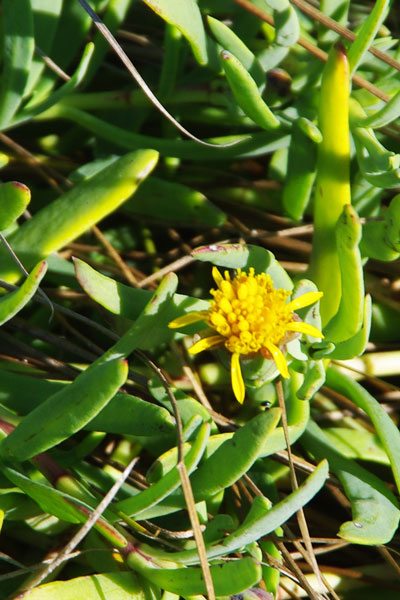
Marsh Jaumea, Jaumea carnosa, is also a member of the sunflower family. This is a plant of the low saltmarsh, subject to longer inundation on high tides, and more aggressively adapted for salt tolerance. The pale green stems are sprawling and frequently branched, rarely rising more than a few inches above the mud, and liberally endowed with fleshy linear leaves. Flowers are much smaller than the Gumweed flowers, typically an inch or less in diameter. The flowers are mostly discs, with just a few short ray flowers. They are much less showy, but none-the-less a real gem close-up. Unlike the Gumweed, the Marsh Jaumea has no close relatives in this region. Its nearest relatives tend to be upright to sprawling herbs and subshrubs from mostly tropical regions. It appears that by adopting its special saltmarsh adaptations it has been able not only to invade a new habitat, but has also been able to extend its distribution far beyond its tropical ancestry.
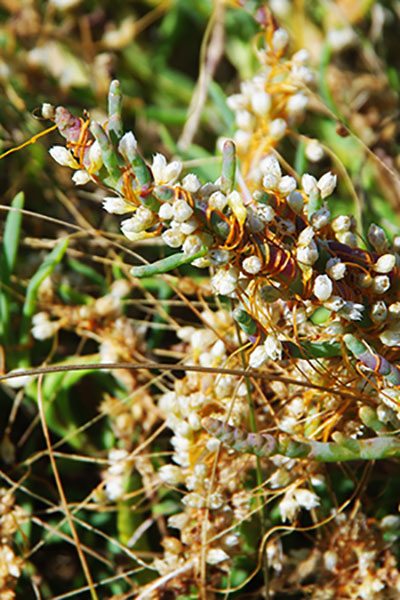
Salt Marsh Dodder, Cuscuta salina, is a part of the Morning Glory family. This is a parasitic plant, growing on Pickleweed and sometimes on Marsh Jaumea in coastal low saltmarshes. It is annual, and generally cannot be seen until about June, when it appears as a tracery of threadlike orange stems winding over the surface of the host plants. In late July and August the plants sprout hundreds of tiny white flowers that look a bit like miniature Christmas Cactus blooms. The tangle of dodder stems can get so dense that from a distance they look like bright orange patches on the surface of the marsh. There are over 100 species of dodder worldwide, mainly in warm climates, and many are important pests to cultivated crops, both because they extract nutrients from the hosts, and because they transmit viruses from host to host. In the salt marsh environment, they should be thought of as an interesting component of diversity rather than as a pest.
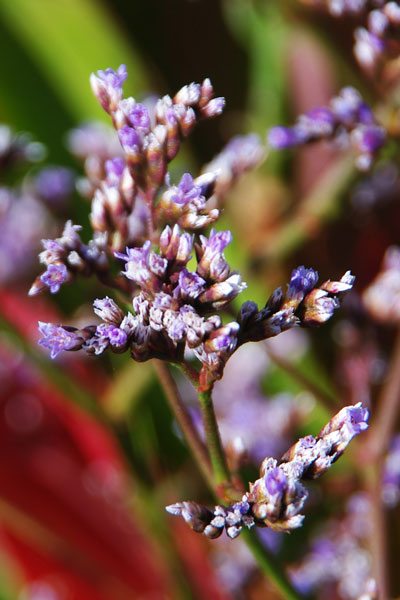
California Sea Lavender, Limonium californicum, is in the Leadwort family. This is actually the closest local relative to the Sea Thrifts that live on our rocky bluffs and that are abundant in coastal landscaping. This lovely flower occurs north at least to Yaquina Bay, and has been reported from the Salmon River estuary. It may well occur in Tillamook County, but to my knowledge has not been documented here. Sea Lavender is one of those understated plants that look better close-up than in the distance. A dense rosette of oblong green or reddish leaves produces numerous dark green stems that branch freely, and whose tips are lined with rows of tiny pale lilac flowers. It grows in the high saltmarsh, generally at higher elevation (therefore less tidal inundation) than the Pickleweed or the Marsh Jaumea.
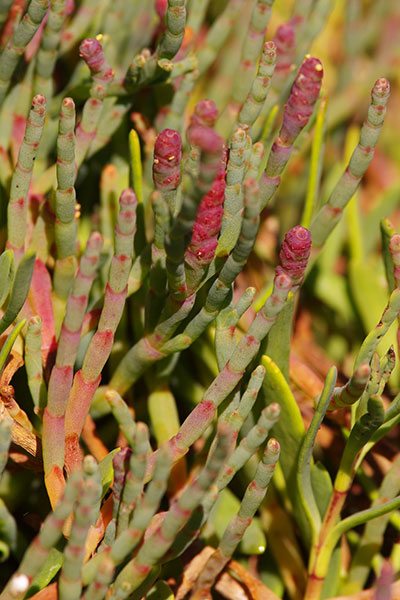
Pickleweed (also known as Glasswort or Samphire), Salicornia depressa is in the amaranth, or pigweed family. The taxonomy of pickleweeds is in disarray: S. depressa is the name used tentatively in the Flora of North America but other references us S. maritime or other names. Pickleweeds are low-growing succulent marsh plants with jointed stems and no real leaves. Basically they look like miniature thornless candelabra cacti. Color may be pale green, blue-green, reddish, or magenta, depending on plant health and age. Pickleweed is edible, and occasionally available in markets, but probably should not be eaten in large quantities because of its salt content. Pickleweed can also draw up the mineral selenium from the mud. Selenium is a needed nutrient in small doses, but can be toxic at higher concentrations. Various forms of Pickleweed are widespread on the coastlines of North America, Eurasia, and Africa, and also occur in inland salt marshes in all of these continents. Their seeds appear to be transported by shorebirds, and multiple colonizations have contributed to the taxonomic difficulties. Pickleweed flowers are more subtle than the other species included here, but I am including it here because of its role as the primary host of the next species. The flowers are contained in slightly expanded branch tips sections with scales like a narrow spruce cone, and with short stamens protruding from them. Sometimes these flowering tips are bright magenta, contrasting with the green vegetative stems below.

